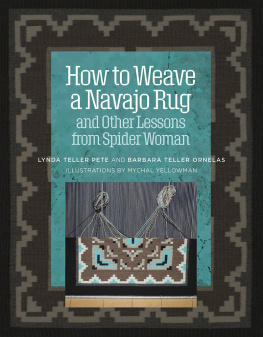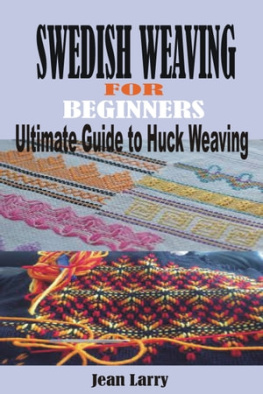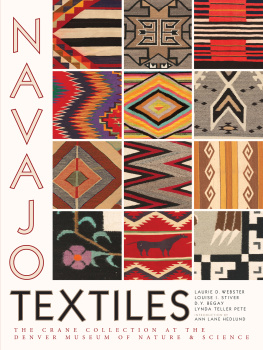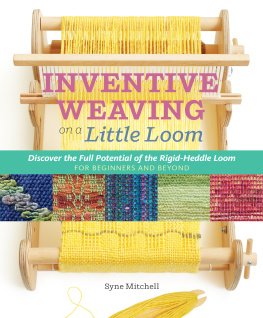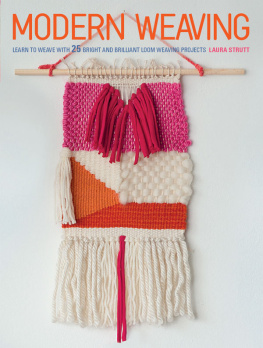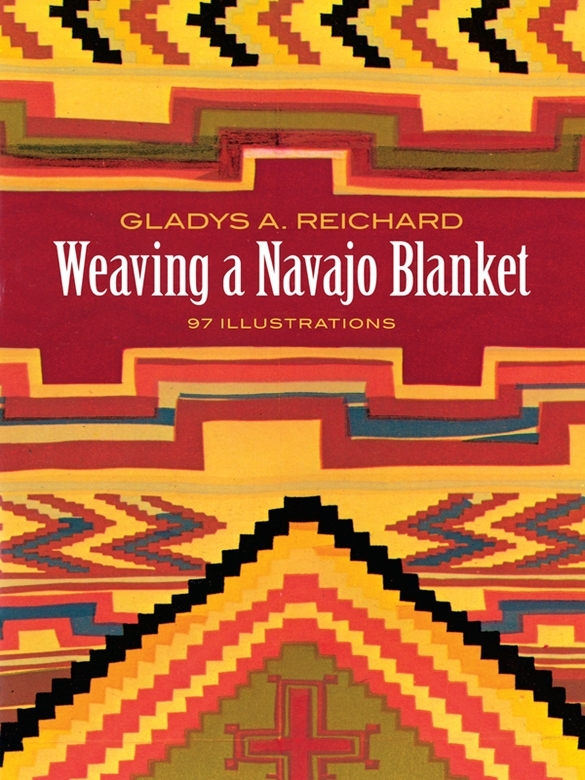Gladys A. Reichard - Weaving a Navajo Blanket
Here you can read online Gladys A. Reichard - Weaving a Navajo Blanket full text of the book (entire story) in english for free. Download pdf and epub, get meaning, cover and reviews about this ebook. year: 2013, publisher: Dover Publications, genre: Art. Description of the work, (preface) as well as reviews are available. Best literature library LitArk.com created for fans of good reading and offers a wide selection of genres:
Romance novel
Science fiction
Adventure
Detective
Science
History
Home and family
Prose
Art
Politics
Computer
Non-fiction
Religion
Business
Children
Humor
Choose a favorite category and find really read worthwhile books. Enjoy immersion in the world of imagination, feel the emotions of the characters or learn something new for yourself, make an fascinating discovery.
- Book:Weaving a Navajo Blanket
- Author:
- Publisher:Dover Publications
- Genre:
- Year:2013
- Rating:5 / 5
- Favourites:Add to favourites
- Your mark:
Weaving a Navajo Blanket: summary, description and annotation
We offer to read an annotation, description, summary or preface (depends on what the author of the book "Weaving a Navajo Blanket" wrote himself). If you haven't found the necessary information about the book — write in the comments, we will try to find it.
The author spent four summers (193033) living and working among the Navajo, during which time she learned the principles of weaving. In this book she takes readers through the same process, introducing the careful details, the personalities she encountered, and the materials and methods of weaving in the Navajo style.
The spinning of the yarn, the dyes, the equipment, the weaving processes, the designs and colors, even the tensions and textures of the final product are all part of weaving a Navajo blanket. The author guides readers through each step, from choosing the wool through carding and spinning warp and weft yarns, building and setting up a loom, creating a design, and carrying out the actual weaving. Although the emphasis is on typical blanket weaving, the author also covers the related arts of saddleblanket weaving, warp weaving, scalloped edge weaving, double-faced weaving, and sandpainting tapestries. She also comments on history, patterns, symbolism, the effect of the market, and other matters that affect the Navajo weaving style. In five appendixes she reviews the implements and materials of weaving, Navajo materials for natural dyes, weaving terms, and simple lessons in learning to weave a Navajo blanket. Nearly 100 photographs and line drawings illustrate the processes and finished work.
Crafters, whether they want to start from scratch or gradually add Navajo elements to their other weaving skills, will learn from this book the authentic steps of Navajo weaving. Collectors, ethnologists, and others will learn more about materials, techniques, and related matters that will help them in judging, appraising, and enjoying the processes that go into weaving a Navajo blanket.
Gladys A. Reichard: author's other books
Who wrote Weaving a Navajo Blanket? Find out the surname, the name of the author of the book and a list of all author's works by series.



